Yuri: An Indepth Look at Women in Love
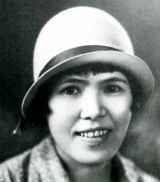
A new student transfers into a wealthy all girls school and falls for the most popular girl in school. Long time readers of Yuri, like myself, would pass this book by on the shelf without a second glance. Before I go into the tropes of the genre, a bit of historical context is needed. Gay relationships between men have been recorded all the way back to the Tokugawa shogunate (1603-1868), with the samurai class practicing Shudo, or the way of youth in which they would take a young apprentice as a lover until they completed their training. Lesbian relationships did not become public knowledge till 1911 when a double suicide rocked the newspapers of the time. They existed before this time, but they either were never acknowledged as such or were seen as nothing more than platonic. These relationships are called Class S in japan, the S standing for “shojo” or girl. It is use to denote that such romances are seen as childish and stepping-stones towards dating men. The term Yuri gets its name from Yurizuko or Lilly tribe a term for media with lesbian themes. It originally referred to pornography and magazines targeted at a lesbian audience. But overtime, the term Yuri lost its pornographic connotations and instead became about women’s love stories.
The most famous writer of Yuri was Yoshiya Nobuko. She was a woman a head of her time, traveling the world with her sectary and partner, Monma Chiyo. Yoshiya was a lesbian novelist whose numerous short stories and novels focused on the romantic relationships between women. These were all written in a such a way that they could also be seen as friendships or lesbian relationships. With flowery confessions of love, flower motifs (her short story collection is titled Hana Monogatari or Flower tales), and an all girls school setting she laid the foundation for the motifs and relationships found in modern Yuri. Yoshiya wrote during the Taisho era of Japanese history which lasted from 1912-1926 and was a time of great social change. The first feminist magazine, Seito (Bluestocking in English, named after the English literature movements of the 18th century) was published. All men gained the right to vote and women gained fiscal independence because they were able to work outside the home for the first time. It was in this climate that Yoshiya published her works. Early Yuri manga was similar to American lesbian fiction of the 20’s through the 60’s with women falling in love only for them to be unable to be together either by having one of them die, getting married to man despite their feelings or never see each other again. There was a lack of lesbian creators in the American lesbian fiction scene as well, with most novels being written by men. Yoshiya was a breath of fresh air since in her book Yaneura no Nishshojo published in 1919 ended with the couple deciding to stay together beyond high school, a revolutionary concept for its time. I’d compare it to the lead characters in Mary Radcylffe Hall’s Well of Loneliness which was banned after being published in 1928 because its characters were unshamed of their lesbianism. Sadly, none of Yoshiya works have been translated into English. For more information on her writing read Sparkling rain: Tales of women who love women.
The problem is that Yuri has yet to grow beyond these motifs. The genre, like Yaoi, is written mainly by heterosexual women with lesbian writers like Morishima Akkio and Takamiya Jin being some of the few openly gay writers in the genre. For a genre focused so much on women in love with women, the lack of lesbian voices is disheartening to say the least. Writers mainly retell the same story: High school girl meets another High School girl, they fall in love, one of them thinks their love is wrong or strange, they realize it isn’t and they stay together until graduation. Rinse and repeat dozens of times and you have a large chunk of Yuri storylines. But why an all girls school setting? In pre war Japan, men and women lived in different worlds going to all male and all female schools until adulthood, thus Yoshiya was capturing the time period she lived in. This creates a undercurrent that lesbians can only exist in situations without men, which is far from the truth.
Topics like Homophobia, coming outing to friends or co workers are totally nonexistent in these stories creating an idealized view of lesbian lives. There are amazing writers in the genre who aren’t gay such as Yamaji Ebine, whose works break the clichéd cycle by focusing on adult women who are sure of their sexuality and themselves. Her works Love of my Life (2001), Sweet Loving Baby (2003) and Indigo Blue (2002) and Free soul (2004) have not been released in America but have been released in France. Her works fall under the category of Josei manga for women ages 15 to 44. Love of my life focuses on Ichiko as she comes out her father. Her father isn’t too surprised since both he and his late wife were gay. Ichiko’s parents wanted children but since gay couples aren’t legally recognized as anything the pair decided to get married instead. It’s a frank, raw and nuanced depiction of lesbians in modern-day Japan. Morishima Akkio uses the Moe art style to draw her readers in and then tell stories of adult women in love from OL’s (OL is short for Office lady) to classical tales of a princess falling in love with her protector only to forced to be choose between the good of her people and her own personal happiness.
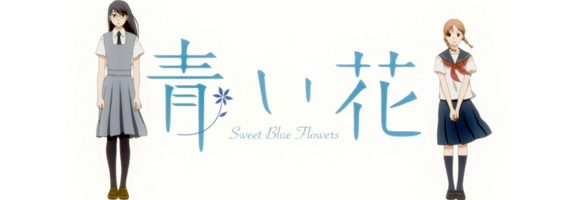
Thankfully, works like Aoi Hana (known as Sweet Blue Flowers in English) break the trend. Aoi Hana tells the story of a young high school girl named Fumi and her childhood friend Ai-chan. Instead of retelling the same story as all Yuri, the series deals with everything from coming out to relationships in a realistic manner without the flowery melodrama found in works like Strawberry Panic. Fumi’s tearful coming out scene is painfully accurate and her struggling with her sexuality is portrayed respectfully and not in an over the top manner. The manga just published it’s eight and final volume in 2013. It’s anime adaption aired in 2009. The writer of Aoi Hana, Shimura Takako also penned Wandering Son, which also deals with LGBT issues.
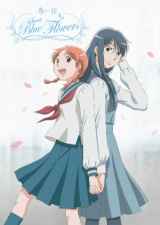
Unlike Aoi Hana, Strawberry Panic (2006) plays up the drama and stereotypes to the hilt. Set at not one but three all girls catholic schools the story chronicles the life of Nagaisa Aoi when she falls head over heels of the Etoile, Shizuma. (Having gone to an girls catholic school, I can attest that Strawberry panic is in no way accurate). The main focus of the series is the Etoile competition in which each school pairs up two girls to represent it’s values and they get symbolically married to each other. (In the novels of the series, Aname gets down on one knee and pretty much asks Hikari to marry her in front of the entire school) Or the scene where Amane and Shizuma gallop across campus on horseback to get to their respective girlfriends, who are both wearing wedding dresses, and save them from as the book calls it “the Tower of Captivity”. Besides the Catholic church views on same sex relationships, at my school none of this would even remotely happen. The closest thing from this series that seems vaguely factual is the oath ceremony during the symbolic marriage which draws a bit from the crowning of Mary. My school didn’t even have an equestrian club. Then again, series began life as nothing more than a poll in magazine in which readers could pair up anime girls (who at this point didn’t even have names) and based on the poll results, short stories were written about the romantic pairings. The problem is the series didn’t develop the cast beyond their archetypes so when Amane falls for Hikari, it’s not because of their intense chemistry or similar interests but because that’s what the poll wanted to happen. It’s all style and little substance. Combine that with problematic aspects such as Yaya being described as “The only real lesbian in school” which seems hilarious considering that this stated by Hikari, a girl who has just stolen a helicopter with her girlfriend and flown to a private island so they can elope. To say that some manga is exaggerated is the understatement of the century.
Modern shows and manga like the 4 panel gag manga Sakura trick are Yuri, but they are seinen manga (whose target demographic is 15-24 year old boys) which explains the loving shot of the main characters thighs in the first few minutes of the first episode. It uses lesbianism for titillation of the male audience, not to explore the issues that come with being LGBT in japan. Madoka Magika (2011) has Yuri subtext but like Sakura Trick it is also Seinen. Unlike Sakura Trick, the characters are well developed, well rounded human beings which allows for the yuri subtext to have more weight and meaning to it allowing for numerous interpretations of the same scene.
The target audience for yuri varies depending on which magazine the story is published in. Works found in Yurihime magazine have a interesting readership break down. According to “The Sexual and Textual Politics of Japanese lesbian comics: Reading Romantic and Erotic Yuri narratives” by Kazumi Nagaike, an associate professor at Oita University…
The publisher of Yurihime, Ichijinsha, once performed a readership survery, showing that approximately 70% of its readers are female, and 27% are teenagers; 27% are 20 to 24 years; 23% are 25-29 and 23% are over 30. Even though this survey seems to rely on self reporting, the data shoes that nearly half of the Yurihime readers are over 25, and thus cannot be labelled a shojo themselves.
The target audience for shojo manga is girls ages 10 to 18, which makes Yurihime’s readership even more engaging. A huge portion of readers are adult women. The letters page of Yurihime contains numerous confessions of lesbian love. Some letters tell of readers longing for co workers or other girls in their class. Some are from heterosexual women who just enjoy the stories. While these stories may not be the deepest or most engaging they do provide a much needed outlet for exploration of the female sexual identity.
While Yaoi can take place in dystopian futures and far away kingdoms, Yuri is stuck with high school as a main setting and if the writer is feeling ambitious, an office. Simoun, a 2006 science fiction anime series tried to break the mold by creating an entire world where women are the default gender from birth. When they turn 16, they must choose whether to stay female or become male. It dealt with themes of war, racism, the role of religion in conflict, post traumatic stress and grief. While it still had the all female setting that is typical of the genre it explored a wide range of themes and concepts. Akuma no Riddle (2012) is currently being made to anime and its lead character is a female assassin who falls in love with her target. It too, sadly, falls into the trap of high school settings but it has assassins. Space operas, swashbuckling tales of high adventure, espionage, paranormal investigations there are so many stories just waiting to be told.
With series like Morinaga Milk’s Girlfriends becoming a New York Times best seller in the States, it’s clear that there is a market for Yuri but the few works that do come over fail to adequately represent the lesbian experience to the fullest. The world has evolved and so should Yuri. The anime version of Aoi Hana has been licensed by Rightstuf. Both ominibus editions of Girlfriends and the omnibus edition of Strawberry Panic have been licensed by Seven Seas entertainment. Wandering Son is licensed by Fantagraphics. Simoun has been licensed and released on dvd by Anime works. Sakura Trick is unlicensed but is stream on Crunchyroll.
What do you think? Leave a comment.




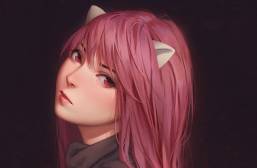
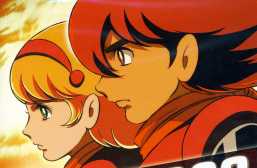

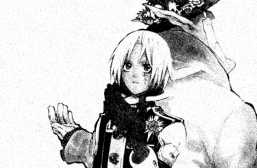
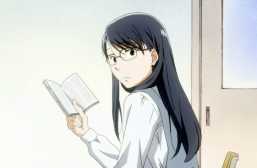
Picked up reading Aoi Hana the manga after watching the anime. While some scenes were surprising, I enjoyed it nevertheless. The last chapter just had way too many feels.
Fumi-cahn truly loved ah-chan, but ah chan’s still remains confused about her own feelings… when I first viewed the anime I thought that it would have a happy ending but then again there we were with another cliffhanger anime that is why I tuned in on the manga instead.
I recently finished reading the last chapter and I have to say that I am disappointed. Akira and Fumi get back together but it just feels too bland. I would have liked a sweeter ending.
The way in which this manga is written and drawn, I’m crying… a truly amazing work of art. Best Yuri manga to date.
way too much emotion, i don’t even know what’s real
Love the Yuri genre! I was just reading Kanamemo and I’m glad I’ve found it, it’s just my taste…cute and funny…just heartwarming.
Try “Pieta” next, it is really amazing. The character exploration is amazing, and this series appeals to the mind and study of humans. This is a great psychological exploration that is purely taken from a 3rd person perspective.
Nice, I’m not a big Manga reader so Yuri is new to me. Any good titles out there?
Last one I read was Sasameki Koto, I liked the series, but they dragged the ending out a lot longer than necessary, and then suddenly sped it up really fast toward the end. They skipped like their whole 3rd year of high school I think. Not that they needed it in, but the story started in their first year and didn’t have nearly enough content to fill out 3 years in story time, so they were just skipping big chunks of time in order to have a graduation conclusion
Sasameki Koto is a great suggestion. It’s coming to America under the title Whispered Words. Girlfriends by Milk Morinaga along with the anthology collection Kisses, sighs and Cherry Blossom pink by the same author is are great place to start.
How about Blue Drop, it is a hidden gem. I like it a lot more then the anime, which has about as little to do with this manga as it can get away with.
– Chirality
– Sweet Blue Flowers
– Maka-Maka
I’m not much of a yuri reader and this article is a pretty good glimpse into the world. I’d just like to mention that as you know, this problem resides with nearly every genre of media in the world. We have our block-buster action-hero stories mostly following a set template, other kinds of anime falling in the same trap as the yuri genre, and books… well we’ll leave it at that (please never have me read a Twilight clone again…). I enjoyed how you delve into specific problems and cite examples that differentiate the issues surrounding yuri with other genres of anime. Job well done.
Thank you for your kind words. I do agree that this problem extends to all forms of media.
Very well done, I’ve never heard of this writer, genre or text 🙂 So thank you!
Thank you so much for mentioning Aoi Hana! It’s such a wonderful story full stop, but I have to say it’s definitely one of the best yuri titles I’ve come across. I’ve met many people who picked up Sakura Trick this season hoping to find a good story about two girls falling in love and were turned off by how much of a male gaze the show has. For anyone who picked up Sakura Trick and was disappointed by its intended audience, I would definitely suggest Aoi Hana. Hourou Musuko (Wandering Son) was also poignant. Here’s hoping for more stories penned and illustrated by members of the LGBTQA communities.
This is a good article that provides a good look into the yuri genre. Short, succinct, and to the point.
I just wanted to mention that two of the mangaka’s names are not written correctly. It’s Takemiya Jin and Morishima Akiko.
I enjoyed that you picked this topic. I liked knowing how the genre came to be. I also liked that you are posing a question to the world as well.
I never stepped in the realms of Yuri manga or anime, but this sets as a source of background knowledge for me.
This is a great overview of Yuri and some of its shortcomings. As a student of Japanese LGBTQ rights, I’ve noticed that lots of yuri and yaoi and almost fetishized to the point of being disingenuous. There are very few yuri manga that I’ve heard of that authentically portray the trials and tribulations of a love story without falling in the drama and cliches of most mainstream shoujo manga.
Thanks for the read!!!
As a frequent reader of Yuri I find your overview of the genre to be very interesting, particularly your historical and cultural information regarding the genre. I really hope there are more lesbian writers out there, waiting to tell true stories with their manga, rather than the same recycled plots.
Thanks for writing this. I wasn’t familiar with the lesbian = immature mentality. It helped me pick up some subtext I’d missed in Utena. Thanks!
I love reading yuri manga, and to see a post this well written is extremely difficult, so thank you for the great read! The works mentioned are all notable titles that I also highly recommend to new readers of the yuri genre, so I will certainly come back to this article when I’m finding myself in need to explain the genre in detail to friends. But I do want to go reread Utena though!
I really enjoyed this. As a huge fan of the yuri genre, it’s nice to see a more critical examination of what’s often taken as a very “silly” subject.
Enjoyed reading this.
It’s always so heartwarming to learn a little bit more about the history of yuri — always has been my favorite romantic genre <3
As with every genre, I do wish there was more narrative innovation but perhaps there might be renewed interest in these kind of stories with Madoka Magica's immensely popular subtextual relationship.
The entire concept of “Yuri” has always interested me because although emotional bonding is a commonality among most, if not all, females, this specific genre goes beyond that. It is work written primarily by women, for female audiences who support and appreciate the unique love that can develop between girls. I was not aware of the historical aspect of the “1911 double suicide” or Japan’s “Class S”, which I found rather intriguing and informative. I do wish there were more openly lesbian writers for the genre so readers could have more realistic and original works.
The same old storylines are used time and again, eventually becoming so cliché that most readers will often ignore a writer’s work because it does not seem interesting. The thought of an idealized world in this line of work is exciting and optimistic, especially since realistically, the world appears to be more accepting of lesbians now.
Stretch! Not entirely yuri but a softer redemption of cancelled manga Prism from the same author.
Recently, Citrus entered New York Times Bestseller list (for two weeks). I found it surprising because of its subject matter. I wonder whether this should be taken as the encouraging sign of yuri genre being accepted by the general manga fans, or just a shock value.
Yuri is just another genre (By the Way i love yuri) people should not make it like its all sex and not push the stereotypes so far keeping it semi-real.
I thought, like Yaoi, Yuri is a term that includes sexual content. Shoujo-ai (girl-love) and shounen-ai (boy-love) would be the ones that exclude sexual content… No?
I actually never heard of the word Yuri before until I stumble on manga that is one, which is called Citrus. Lovely manga. I recommend it.
I completely agree with you about Strawberry Panic. It’s overly dramatic in the anime as well as in the novels/manga. Its very obvious that it is overly dramatized, and inaccurate to real religious schools.
One manga that seems to be more realistic (at least character wise) is the manga Ayame to Amane and Ayame 14. Ayame 14 specifically is about a girl coming to terms with her sexuality, in a bit more realistic way than portrayed in most manga. It might be of interest to you if you haven’t read it yet.
Aoi Hana is still, so far, one of the most realistic portrayals of female homosexuality I’ve seen. Otsu Hiyori also tends to write pretty realistic portrayals, and although all characters are high school age, they’re not all in a school setting, which is always nice.
I definitely tend to lean towards yuri which isn’t over exaggerated. God knows how Kannazuki no Miko or Marimite ever became popular in the first place, Kannazuki for just being plain terrible, and Marimite for being the most boring manga I may have ever read in my life – which is really saying something.
The yuri genre really does need to step up it’s game, and this article does a great way of showing that.
I haven’t explored the yuri genre much at all, and honestly I haven’t found much besides the more pornographic manga and anime. I will also admit that my first thought when hearing “yuri” is still lesbian porn, since there’s been nothing saying anything different. I wondered what the term was for non-pornographic lesbian tales, and I’m glad I now know the genre. There hasn’t been much for me to find in the American Midwest besides porn, and all the descriptions sound scandalous. I did notice an all-girls high school theme, though. I want to look into more manga and anime, and I’m very glad you gave some titles of good ones. This was an interesting read, and I’m excited to learn more about it!
@Fox
“Yuri” in anime & manga is simply a catch-all for F/F content produced by Japan. It doesn’t stand to mean “Lesbian porn” or lack thereof. Yuri ranges from dedicated friendship between girls/Girls that look cute or sweet together – to – 100% romantic love/Sex & love between girls + women.
Hello, lesbian here who is so incredibly conflicted about Madoka Magika. On one hand, I just love love love love the show and enjoy the characters, but on the other hand it skeeves me out to see men sexualizing young girls. I wish there were Yuri which didn’t take place in high schools, I feel like it contributes to so much negative objectification of young girls and lesbians.
While I struggle to find Yuri manga or anime that I like, I have absolutely fallen in love with a (Chinese?) work called “Their Story” by Tan Jiu. It’s mostly comedy but involves same-sex relationships in a unique comic-strip style. Unfortunately, it deals in the typical high school setting (sigh). Give it a go though–the scanlators are really dedicated and it’s impressive.
Oh, but don’t get me started on Durarara!! x2 and the “Yuri” depiction there. The female “twincest” is degrading and so out of line with how the LGBTQA+ community needs to be represented in media. That kind of portrayal of same-sex relationships is really harmful to young girls who are questioning their sexuality and it annoys me that an otherwise awesome anime is marred by this lesbian-baiting-fanservice or whatever it was meant to be.
If you’re into reading literature, please pick up any of Banana Yoshimoto’s works. She’s a contemporary Japanese writer that often explores lesbian or bisexual relationships in her stories in a Japanese setting. I highly recommend “Hardboiled & Hardluck” and “Asleep”, both of which are short story collections.
I am not that familiar to the Yuri genre. All I have read from this genre is a Japanese webcomic called “Huskey and Medley.” Unlike some of the examples given here it is realistic and not overly dramatic. Just a cute story about two girls falling in love.
Yuri has always been a genre of manga and anime that I’ve strayed away from, precisely because of some of the overused tropes described in this article. Most of the time, when I give one a chance, the stories just fall flat. The characters are simply together because they’re female and have no chemistry. Not everything has to be realistic in the realm of fantasy, true. If it’s not, however, then it should at least be compelling.
The same could be said for manga and anime in general. Main characters always being paired with each other strictly because of their gender, or friendship, when they hardly have any romantic (or human) interactions that aren’t slapstick.
That being said, this article made me reconsider Yuri in particular. I’ll be sure to check some of these suggestions out.
Not a big fan of this genre, but I see why people like it. It can be brilliant at times, but conventions of anime seem to take me out of the moment too much for me to get properly invested in it.
I have to say that Sakura Trick continues to get a bad rap that’s totally undeserved. There is a fan service element shoehorned in, no doubt, but fans of the show always ignore it, since it’s entirely beside the point. The love story between Haruka and Yuu is actually extremely good, just very quirky. Yuu risks her life to save Haruka and declares that she’ll always protect her, right after Haruka asks her to marry her. Later on, when Yuu thinks Haruka is asking her again to marry her, she agrees. After that, they realize their relationship is a love relationship and not friends with benefits and they start avoiding each other for a while out of fear. that provides an opening for Yuu’s older sister to try to steal her girlfriend, but Haruka can’t even imagine not being with Yuu. Meanwhile, Shizuku and Kotone are working towards a life together and are role models for Haruka and Yuu. The whole point of Sakura Trick is that Yuu and Haruka live in their own separate couples’ world and everything revolves around that. It’s as much a romantic comedy as Toradora, say, and every bit as good. Also, given the art of the show, the “fan-service” is not exactly tittilating. It’s also openly mocked on two occasions (the pool half-episode and a cut-away vignette). Sakura Trick the manga is way less fan-service-y and it should be a light novel. Perhaps then people would appreciate the actual story.
big fan of yuri, currently reading Citrus!
I totally agree with your argument. People, in all factions of art, tend to be attracted to cliche because it is digestible. It sells to a wide audience; however the consequences of this are disheartening. I, myself, love cliched stories AND complex stories, but I do agree that there is not enough diversity within the Yuri community. Cliche tends to boil complicated situations down to an “understandable truth of experience,” which is a dangerous game to play because it creates impossible situations and expectations. Thanks for the well articulated overview of the Yuri genre.
I totally agree. Yuri has always been one of my favorite genres, but with the stereotypes and tropes, it makes it really hard to actually find something good and relatable rather than something entirely sexual. Because the relationship between two women is something very complex and somewhat uncommon, I feel like stories and their conflicts should be the same.
This brings up interesting points, it’s true that yuri is a deeply flawed genre that still relies on misogynistic and homophobic tropes… but the article needs an urgent revision. Starting from the fact that this has been already argumented in a much better way, I wonder if the author has read any paper on the subject before writing this? Also, the quality of the writing itself is so bad it’s distracting. They didn’t even get ‘Morishima Akiko’ right.
This is an interesting read!
Even though this article was written in 2014, it’s weird not to be able to say that the genre has exploded in the almost ten years it’s been. Although LGBTQ+ representation is becoming more popular in most forms of media, so many of the problems flagged in this article and the comments section are still so pertinent. It’s like a double whammy between the general neglect female characters face compared to their male counterparts and the stylistic regression a lot of ‘mainstream’ anime are facing where any and all the girls look way younger than they’re meant to be. Whether it’s men or women who find this choice attractive, it’s certainly not doing anything for realistic or at least cathartic representation.